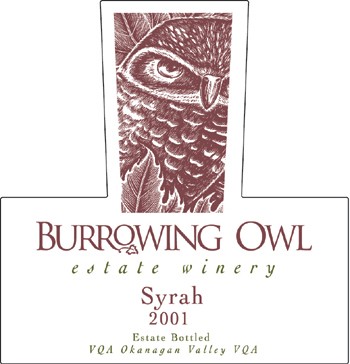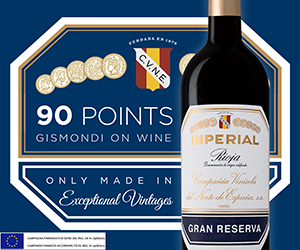At the recent All-Canadian Wine Competition in Toronto, the wine of the year award went to Burrowing Owl's 2001 Syrah.

The bad news is that only 648 cases were made and it is totally sold out. The good news is that the winery made twice as much Syrah in 2002. That wine should be released in October. Considering that 2002 generally was a stellar vintage, the wine should at least rival, if not surpass, the award winner.
For Burrowing Owl fans, the wait could be a long three and a half months - except that the winery has just released two other fine reds from 2001, the Cabernet Franc ($27) and the Merlot ($25).
Both are big reds. The Merlot is a delicious example of the variety: succulent juicy berry flavours enhanced by a touch of spice from the oak. The Cabernet Franc, a bit firmer in structure, shows the twinkle of raspberry in the fruit flavours typical of this variety. While the Merlot is ready to drink right now, the Cabernet Franc deserves a year or so in the cellar. I discovered that after leaving half a bottle overnight. The next day I was amazed and pleased by additional depth and richness that had developed. Both wines merit scores of 88.
The depth of flavour in the Burrowing Owl red wines, the hallmark of good winemaking, likely reflects the maturing of the vineyard.
Now producing about 16,000 cases a year from its winery south of Oliver, Burrowing Owl started as a vineyard project. A Vancouver developer named James Wyse, along with some friends as investors, acquired 100 acres on Black Sage Road in 1993. It was a former vineyard, most of it fallow for five years except for 20 acres of mature Pinot Blanc. Cabernet Franc and Merlot were among the first of the new varieties planted there.
Over the next few years, Wyse and his various partners acquired adjoining acreage until they controlled 288 acres.
The quality of the fruit encouraged Wyse to launch the winery in a 1997 joint venture with Cascadia Brands Inc., the parent of Calona Vineyards, the Okanagan's oldest winery. As winemaker, Burrowing Owl retained Bill Dyer, a skilled Californian who had spent almost two decades at Sterling Vineyards. Dyer, who was 48 in 1997, has just begun a new career as a consulting winemaker and was attracted by the challenge of working in an emerging region like the Okanagan.
Dyer's skill has certainly paid off for Wyse and his partners. In every vintage since 1998, Burrowing Owl wines, notably its reds, have brought home awards. Often, the wines also sell quickly so that, as in the case of the 2001 Syrah, wines are snapped up as they are winning awards, if not before.
The partnership with Cascadia, which provided the capital to build the Burrowing Owl winery, was dissolved last summer when the interests of the parties began to diverge. Burrowing Owl, now fully controlled by the Wyse family and 27 other shareholders, now has completed an elegant restaurant at the winery, an essential step to making this a destination in the south Okanagan.
Cascadia walked away from the partnership in control of about two-thirds of vineyard (the remaining third supports the Burrowing Owl winery). The grapes that Cascadia gets go partly to Calona but primarily to Sandhill Vineyards. Once just a Cascadia brand, Sandhill is being transformed into a stand-alone winery.
John Schreiner is author of British Columbia Wine Country.
 quicksearch
quicksearch





